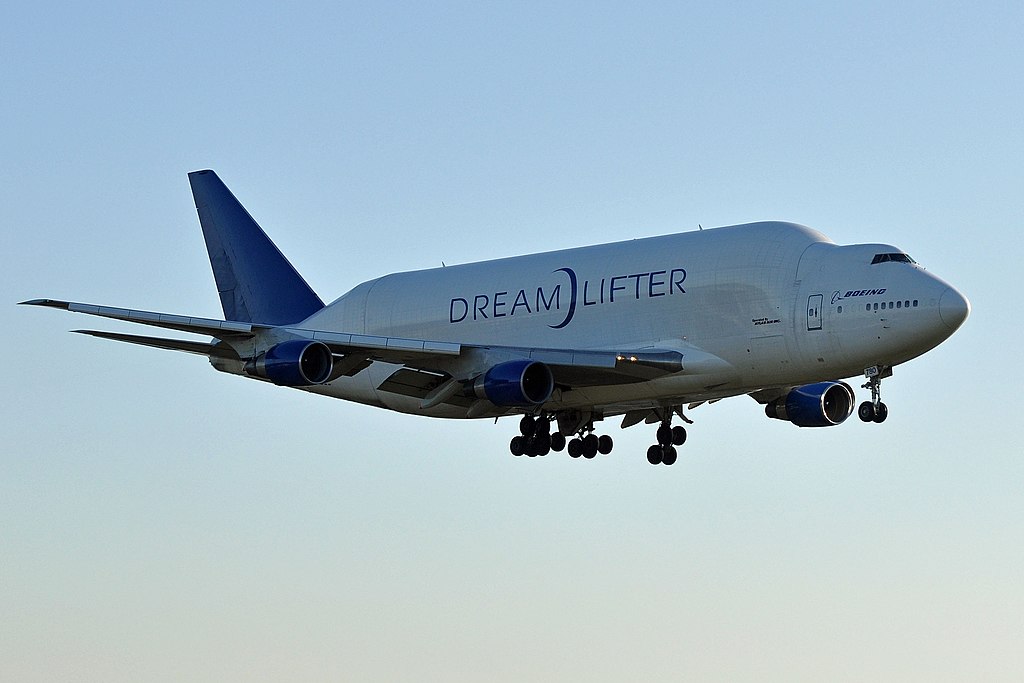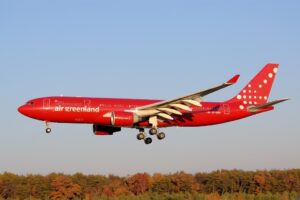In the world of aviation, where innovation and ingenuity reign supreme, the Boeing Dreamlifter stands tall as a testament to human engineering prowess. Designed to transport large and bulky components for Boeing’s 787 Dreamliner, this cargo aircraft is a marvel of modern aviation technology. Let’s delve into the fascinating world of the Dreamlifter, exploring its design, capabilities, and the technical intricacies that make it one of the most unique aircraft in the skies.
The Boeing Dreamlifter, officially known as the Boeing 747-400 Large Cargo Freighter (LCF), is a modified version of the iconic Boeing 747-400. The aircraft’s distinctive design features an enlarged fuselage, allowing it to accommodate oversized cargo. The Dreamlifter has a fuselage with a height of approximately 28 feet (8.5 meters), a width of around 25 feet (7.6 meters), and a length of approximately 235 feet (71.6 meters). In contrast, the standard Boeing 747-400 has a fuselage height of 20 feet (6.1 meters), a width of 20 feet (6.1 meters), and a length of about 231 feet (70.6 meters).
The wingspan of the Dreamlifter is approximately 211 feet (64.4 meters), which is slightly shorter than the wingspan of a standard Boeing 747-400, which is approximately 211 feet 5 inches (64.4 meters). This difference in wingspan is due to the modified fuselage of the Dreamlifter, which necessitated some changes in wing design.
The Dreamlifter’s cargo hold is capable of carrying payloads of up to 65,000 cubic feet (1,840 cubic meters), making it one of the largest cargo aircraft in the world by volume. It can transport up to three times the volume of a standard 747-400 freighter. The Dreamlifter’s unique shape allows it to carry large and unwieldy sections of aircraft, such as wings, fuselage sections and empennages for the Boeing 787 Dreamliner, for assembly at Boeing’s manufacturing facilities.
Its unique swing-tail design enables convenient loading and unloading of cargo, allowing ground crews to efficiently maneuver oversized components in and out of the aircraft. As an interesting fact, the Dreamlifter cannot open it’s swing-tail under own power but is dependent on a ground support unit that drives open the cargo door from outside. While open, the ground unit holds the door in place to prevent it from breaking off the fuselage due to its own weight. There’s a special attachment point on the bottom of the aircraft tail to allow this operation.
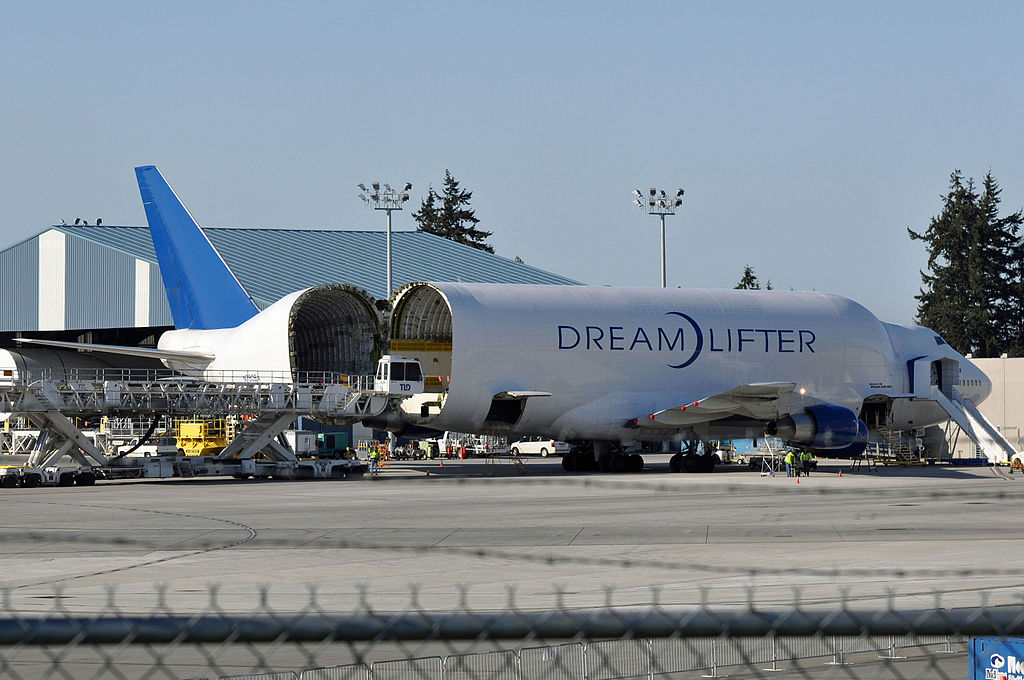
Boeing Dreamlifter from inside:
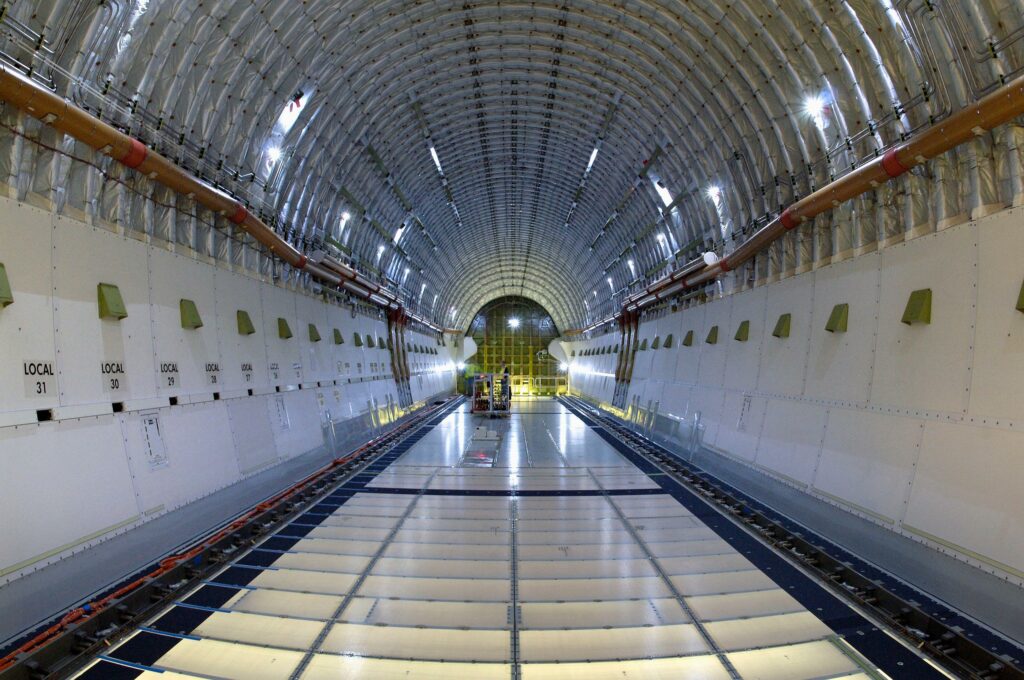
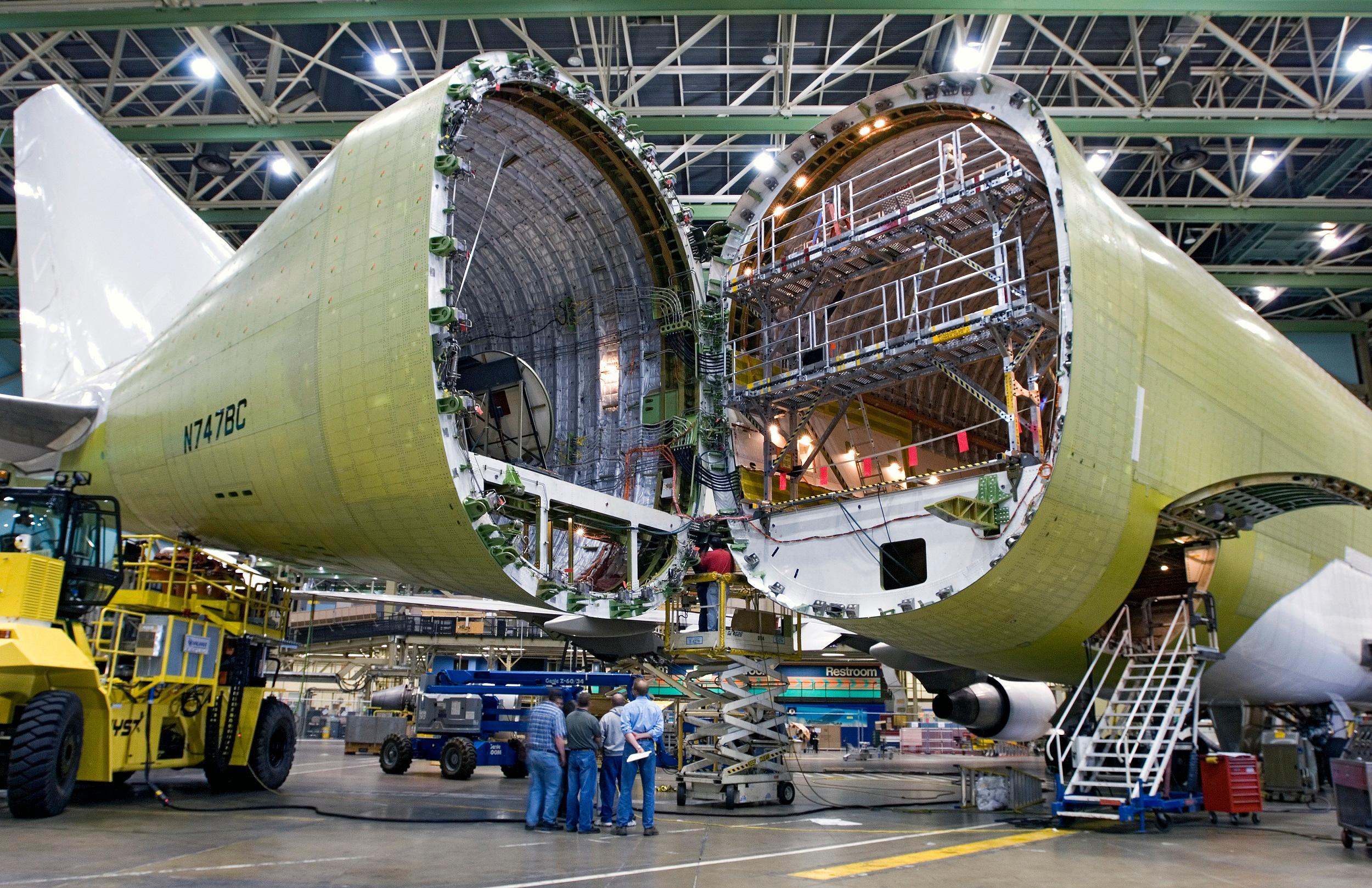
Technical Specifications:
Powerplant: The Dreamlifter is powered by four General Electric CF6-80C2 engines, each generating up to 61,500 pounds of thrust, providing the necessary power and performance to carry heavy payloads over long distances.
Range: With a maximum range of approximately 4,800 nautical miles (8,890 kilometers), the Dreamlifter is capable of conducting intercontinental flights, delivering critical components to Boeing’s assembly facilities around the world.
Cargo Handling Systems: The Dreamlifter’s cargo handling systems are designed to accommodate a wide range of oversized components, including fuselage sections, wings, and empennages. Specialized loading equipment and restraints ensure that cargo is secured safely during flight, minimizing the risk of shifting or damage.
Performance: Despite its size and payload capacity, the Dreamlifter exhibits impressive performance characteristics, including a maximum takeoff weight of 875,000 pounds (396,890 kilograms) and a cruising speed of approximately 565 miles per hour (910 kilometers per hour).
Boeing has converted a total of four Boeing 747-400 into Dreamlifters and they are being operated by Atlas Air on behalf of Boeing. Those are N747BC, N780BA, N249BA, N718BA.
Since entering service in 2007, the Boeing Dreamlifter has played a vital role in Boeing’s 787 Dreamliner program, facilitating the transportation of essential components between Boeing’s production facilities and assembly sites. With its ability to carry oversized cargo efficiently and reliably, the Dreamlifter has contributed to the success and efficiency of Boeing’s global supply chain, ensuring timely delivery of critical components to support aircraft production and assembly.
Title Photo: (c)ERIC SALARD

